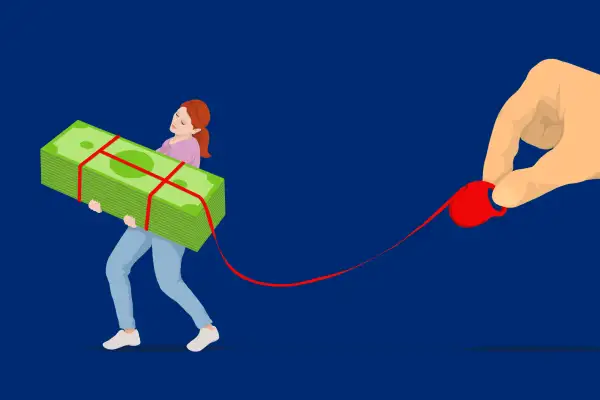For Small Businesses, Getting a PPP Loan Is Hard. Using It Is Even Trickier

For small business owners, the federal government’s Paycheck Protection Program has been a nightmare to navigate since the day it launched.
These employers—who were supposed to be the program’s primary target—have faced rejected applications, system outages, and insufficient funding — all while bombarded by headlines touting the large sums quickly secured by Shake Shack and other multi-million dollar franchises.
Now, those mom and pop shops lucky enough to get through the queue face a fresh crop of hurdles, with little guidance from the Small Business Administration, the agency overseeing the program, to ease their burden.
“There are a lot of real world scenarios that business owners are facing," says Gerri Detweiler, a business financing expert and education director at Nav.com, a fintech platform helping small business owners connect to PPP funding. “They don’t have good enough information.”
The PPP loans were designed to pump cash into businesses that agree to retain their head counts for eight weeks during the coronavirus crisis, thereby keeping Americans employed while their workplaces are temporarily closed.
Employers won’t have to pay back the loans if they meet certain requirements, but different people interpret those provisions in different ways. And since the SBA's terms are so vague, millions of people are taking out loans without fully understanding the terms they’re agreeing to.
As small business owners struggle to wrap their heads around this program, here's what we do know about the PPP loans — and what they can (and can’t) do for small businesses.
Are these things loans or grants?
Technically, they’re loans. But, as per the CARES Act, they’re loans that will be forgiven if employers meet a certain set of requirements — namely, keeping their headcount and payroll near pre-COVID levels.
If businesses lay off employees, or cut the salary of full-time workers making less than $100,000 by more than 25%, they’ll be expected to pay back at least a portion of the loan. And no matter how big an employer's PPP loan is, at least 75% has to be spent on payroll (the other 25% can go towards things like rent and utilities).
That sounds pretty straightforward. What’s the issue?
As business owners are learning, convincing employees to come back to work during a global pandemic isn’t going to be easy — especially if they’re making an extra $600 a week on unemployment benefits. And since the terms of the loans are so murky, it’s hard to tell whether employers will be responsible for losing workers who quit on their own volition — for financial reasons, health concerns, or otherwise.
The program's rehiring provisions are also throwing business owners for a loop. Employers who have furloughed workers only have until June 30 to restore their full-time employee ranks. Those struggling to stay afloat right now are wondering what good keeping staff around for eight weeks does if it'll take much longer to be fully operational again.
“Employers are very confused about the concept of paying their workers to stay home and not work,” Detweiler says. “A lot of them are saying, ‘how am I going to be able to pay them in eight weeks when my business is actually opening up?”
Aren’t there smart people who figure this stuff out for a living?
Some employers do have relationships with consultants and other business advisors — if they can afford them. But many can’t — which is one of the main reasons companies like Shake Shake and Ruth’s Chris were the first in line (and approved) for the PPP loans. They had help.
Again, though, this is a confusing piece of legislation, so even some “experts” are throwing their hands up in the air.
“I’ve heard from CPAs and attorney who refuse to advise their clients on this,” Detweiler says. "The guidance isn’t clear.”
What should small business owners do?
If you’re waiting on a PPP loan, or you’ve already got one and are figuring out how to use the money, the first thing you should do is talk to your accountant, Detweiler says.
“There are some cases where PPP is not the right choice for the business,” she says. Look into other options, like a new tax credit the CARES Act created for small business owners that allows employers to deduct up to $10,000 total for employees retained during the COVID-10 crisis.
Employees are only eligible for unemployment benefits if there’s no work available to them — so, ostensibly, once the economy starts to rebound, they’ll return to work.
But as a wave of businesses start reopening, there’s nothing stopping these workers from taking a different job — one that isn’t customer facing, perhaps, or pays better than their current gig.
“What’s your headcount going to be after that eight weeks?” asks Travis Miskowitz, a consultant at the accounting and business growth firm Wiss & Co. “That’s something small business owners need to be aware of, and strategize for.”
How can I make sure my PPP loan will be forgiven?
When it’s time to apply for loan forgiveness, you’ll want as much documentation as you can get your hands on to prove that you needed it in the first place, Miskowitz says.
Keep bank statements, sales projections, and other documents that show your business has experienced economic hardships on hand.
“If small businesses take that proactive measure, documenting the need for the PPP loan in the first place, they should be in a good position to apply for forgiveness when it's their time,” he says.
To qualify for PPP forgiveness, employers have until June 30 to restore their full-time employment and salary levels.
In all likelihood, some will have to pay back at least a portion of their loan. That doesn’t mean they shouldn't have applied — especially if PPP helped keep the lights on. But they shouldn't expect things to quickly bounce back to normal, and should have a contingency plan for weathering a sluggish economy.
“Certain businesses will have to face the reality of a changed business landscape for the time being,” Travis says.
More from Money:
How to Make the Perfect Resume

